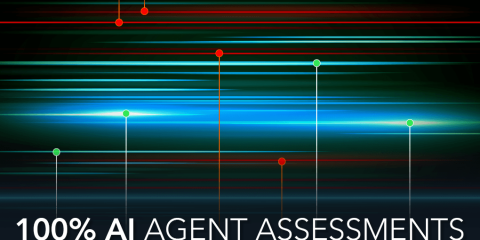Search
Contact Us
While the pandemic has impacted the whole of society, young people have been particularly affected. For example, this year’s A level students have seen their exams cancelled and replaced by alternative assessment models, while many have missed substantial parts of their schooling over the past 18 months. And for those looking to go on to higher education, they probably haven’t had the chance to visit universities and colleges in person due to lockdowns.
All of these factors mean that this year’s university clearing process will be even-more stressful and unpredictable for both students and colleges themselves. No-one knows what new assessment models will mean for grades, and whether students will get into their first choice course, or need to look further afield. And with A level results day coming up fast on 10 August, the peak of clearing is approaching rapidly.
The customer service issues around clearing
Clearing is already the busiest period of the year for universities when it comes to inbound communication to their helpdesks. Handled correctly, it provides the opportunity to recruit students to fill courses and guarantee much-needed revenues. Fail to deliver the experience and answers that students are looking for, and they will choose to go elsewhere in an extremely competitive market.
It is business-critical that clearing goes as smoothly as possible. However universities and Higher Education colleges face five key challenges when it come to clearing:
- Speed is of the essence. Students demand fast communication. They want to be able to get through easily, without facing engaged phone lines or crashing websites.
- Students want to be able to communicate across a wide range of channels, from the phone to email and other digital channels. Universities need to cater for all of these needs, but in an impartial way that doesn’t favour one channel over another.
- Clearing directly impacts students’ futures. This makes it an incredibly emotional and stressful time for them. They have lots of questions that need answering before they invest in a course.
- The clearing period requires enormous additional staffing for universities. They may bring in employees from across the institution to help, or recruit outside resources. All of these people need to be able to get up and running quickly if they are to deliver value.
- Like every business universities have implemented remote working, and will need to ensure that home-based staff are able to operate effectively to support students during clearing.
Clearing the obstacles from the process
Universities and colleges simply can’t afford for their technology to let them down during clearing. That’s where investing in effective, modern and cloud-based customer service systems can help them deliver for students. They should look for five key capabilities in their technology:
1. Burst capacity
As with any peak in demand it is difficult to predict the number of calls and other interactions that universities will receive. They don’t want to be short of capacity, but equally cannot afford to have the same resources in place across the whole year when demand is much lower. This is where the cloud makes it easy to add burst capacity to cope with increases in demand. Essentially colleges can buy more licences when they need them, and then revert to their normal set-up (and costs) once clearing is over.
2. Easy to use solutions
Colleges add additional staffing during clearing, often from other departments or even employing existing students. That means they need to be supported by technology that is easy to use while still being powerful enough to deliver the experience that new students want. Solutions need to be robust, and of course accessible from anywhere to cater for home-based staff.
3. Omnichannel
Students want to make contact across a number of channels and it is important that every interaction is treated equally and fairly. Yet it is difficult to predict how demand will fluctuate between channels. Using a contact centre solution that brings together every interaction into a single queue delivers fair and efficient service for all. Whether people choose to call, email or use other digital channels they will all receive the same access to staff.
4. Ability to provide knowledge across channels
Particularly after a year of lockdowns students have lots of questions about potential courses, facilities and universities themselves. They are unlikely to have been able to properly visit in-person or talk to students for themselves for example. Going to university is a substantial investment, and students want answers before committing to a particular course or institution. To achieve this effectively universities should look to create a centralised knowledge base that can be accessed by students through self-service, without needing to email or call. The same knowledge base can also help staff to deliver confident, consistent responses directly to students. It should be easy to update as circumstances change during clearing. This provides reassurance and makes it more likely that students will sign up for particular courses.
5. Managing stress
As we’ve said clearing is an extremely stressful time, for both students and those speaking to them. Employing tools such as Real Time Speech Analytics (RTSA) helps here. These can spot signs of stress and heightened emotion and automatically escalate calls to more senior or experienced staff. This helps both students and helpdesk agents alike and demonstrates empathy and understanding.
It is not too late for universities and colleges to get ready for the peak of clearing – find out how Enghouse can cost-effectively deliver the capacity you need.

The future of customer service for housing associations
Continue Reading

AI-Enabled Agent Assessment
Contact Center call volumes are increasing exponentially, resulting in supervisors dealing with agent assessments on more of an exception basis than as a normal course of business. While expectations are that all agents will adhere to call scripts, manage conflicts, and comply with regulations while treating customers with empathy. How do you make sure?
Continue Reading
Thank you!
You have successfully subscribed to our newsletter.
Sign up here to watch your selected video as well as gain access to the other videos listed here
Sign up here to watch your selected video
Sign up here to watch the videos as well access to more Tips 'N' Tricks videos
Get your free download